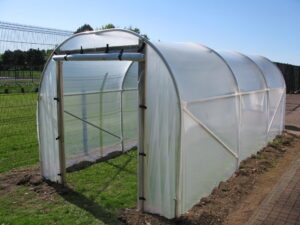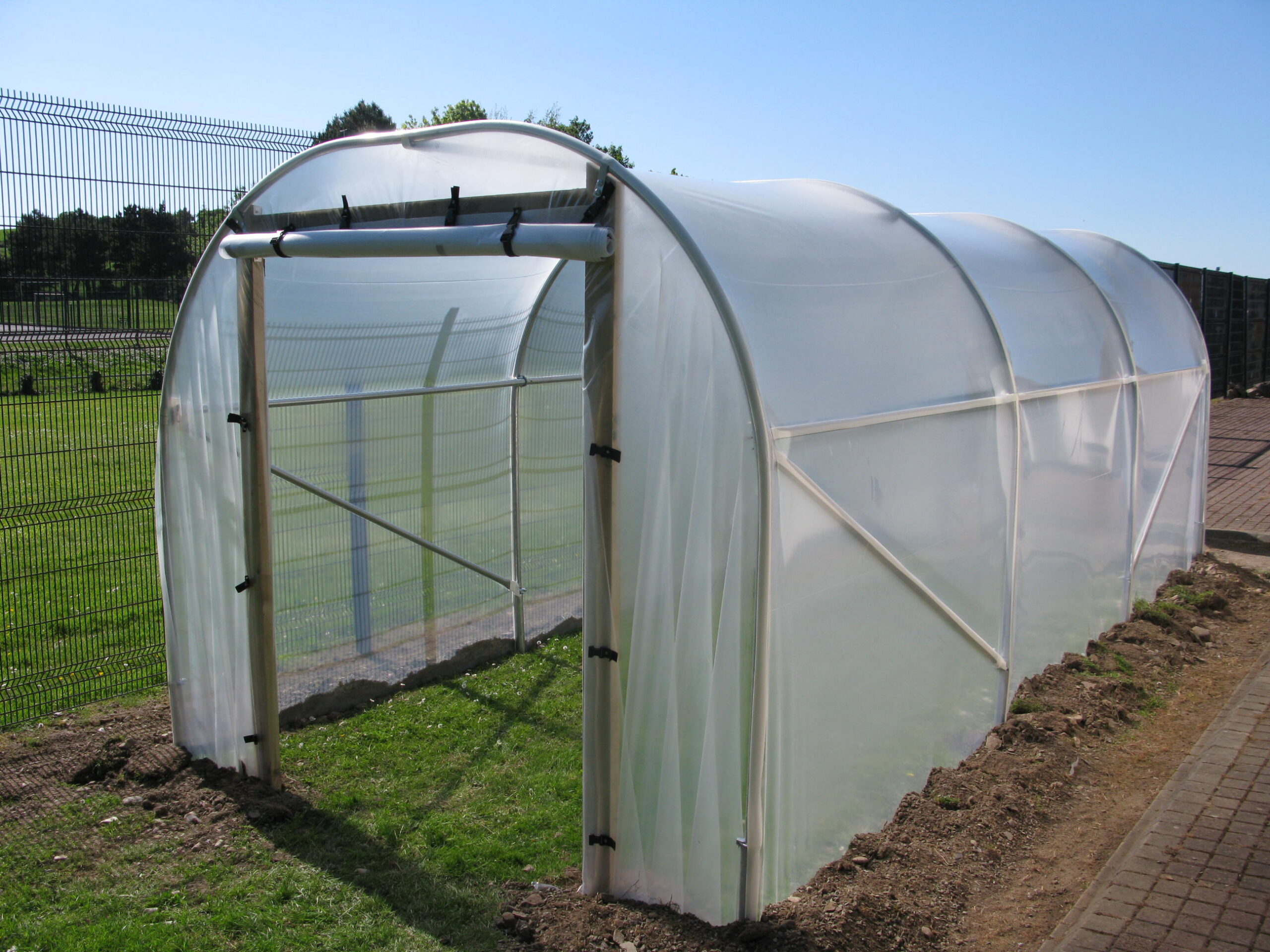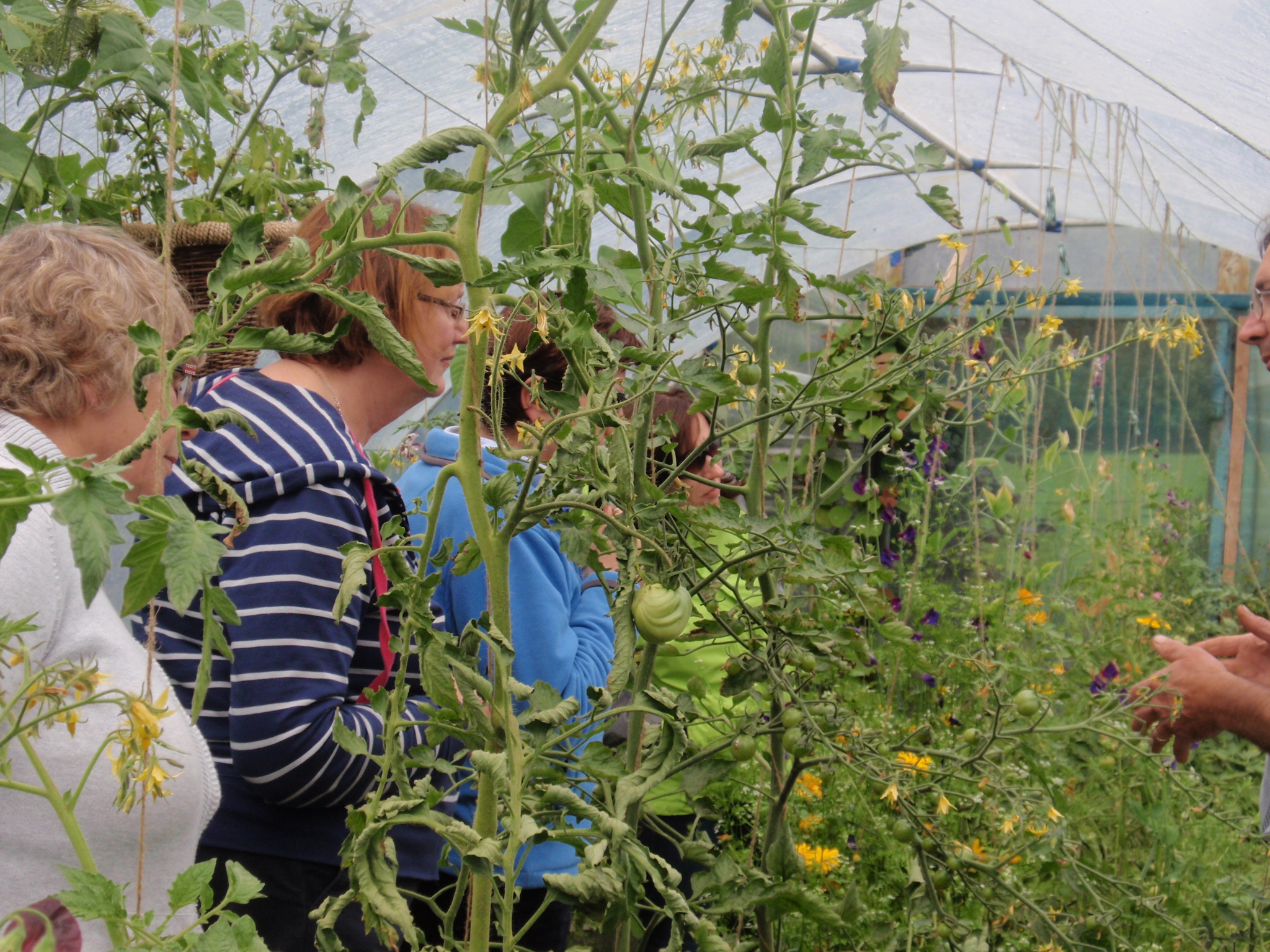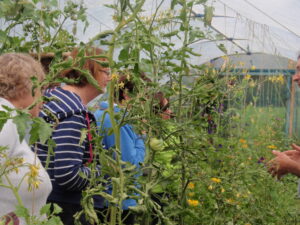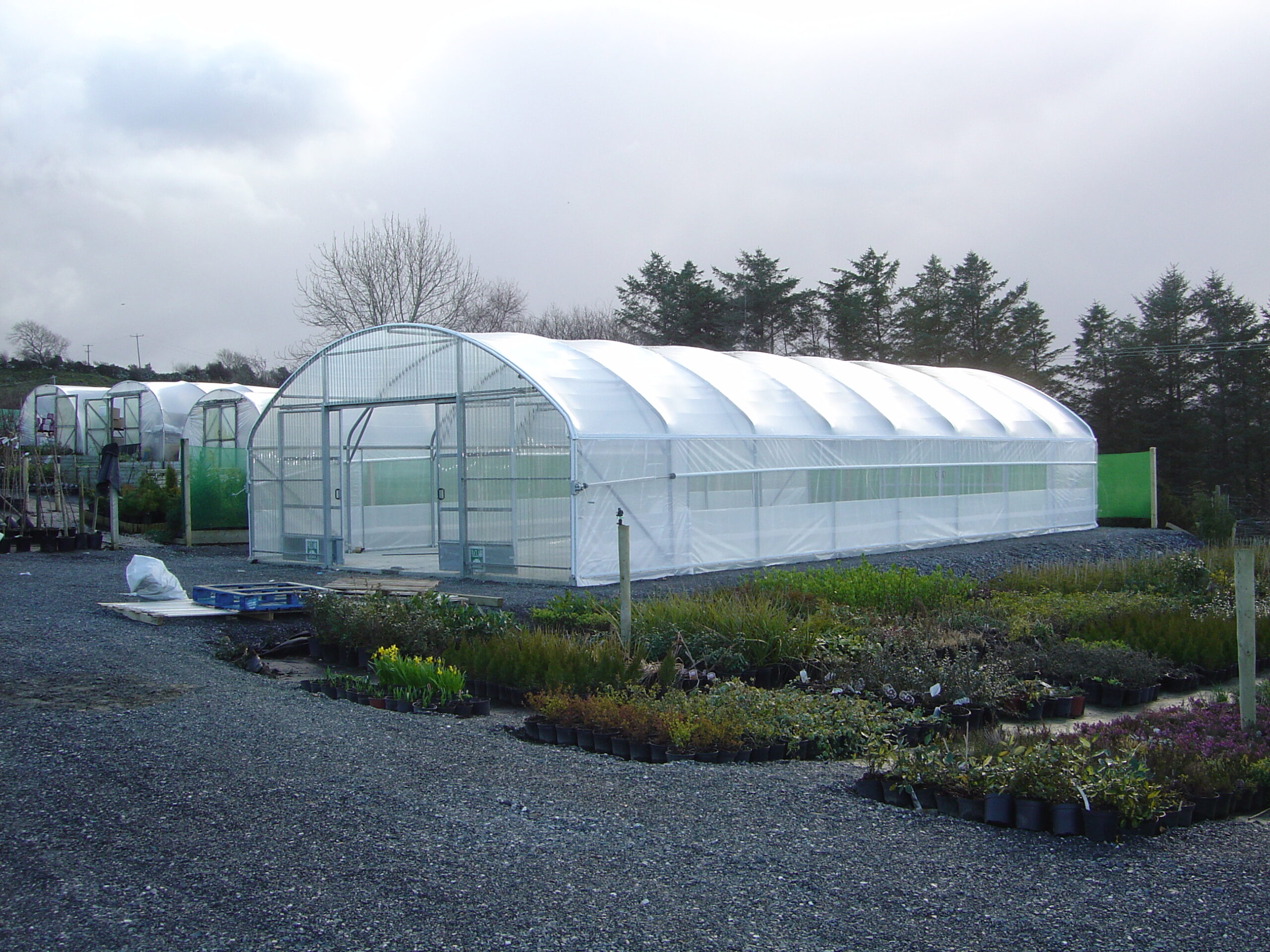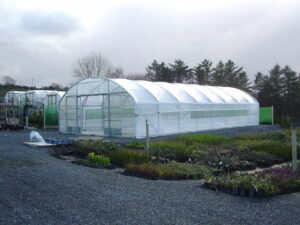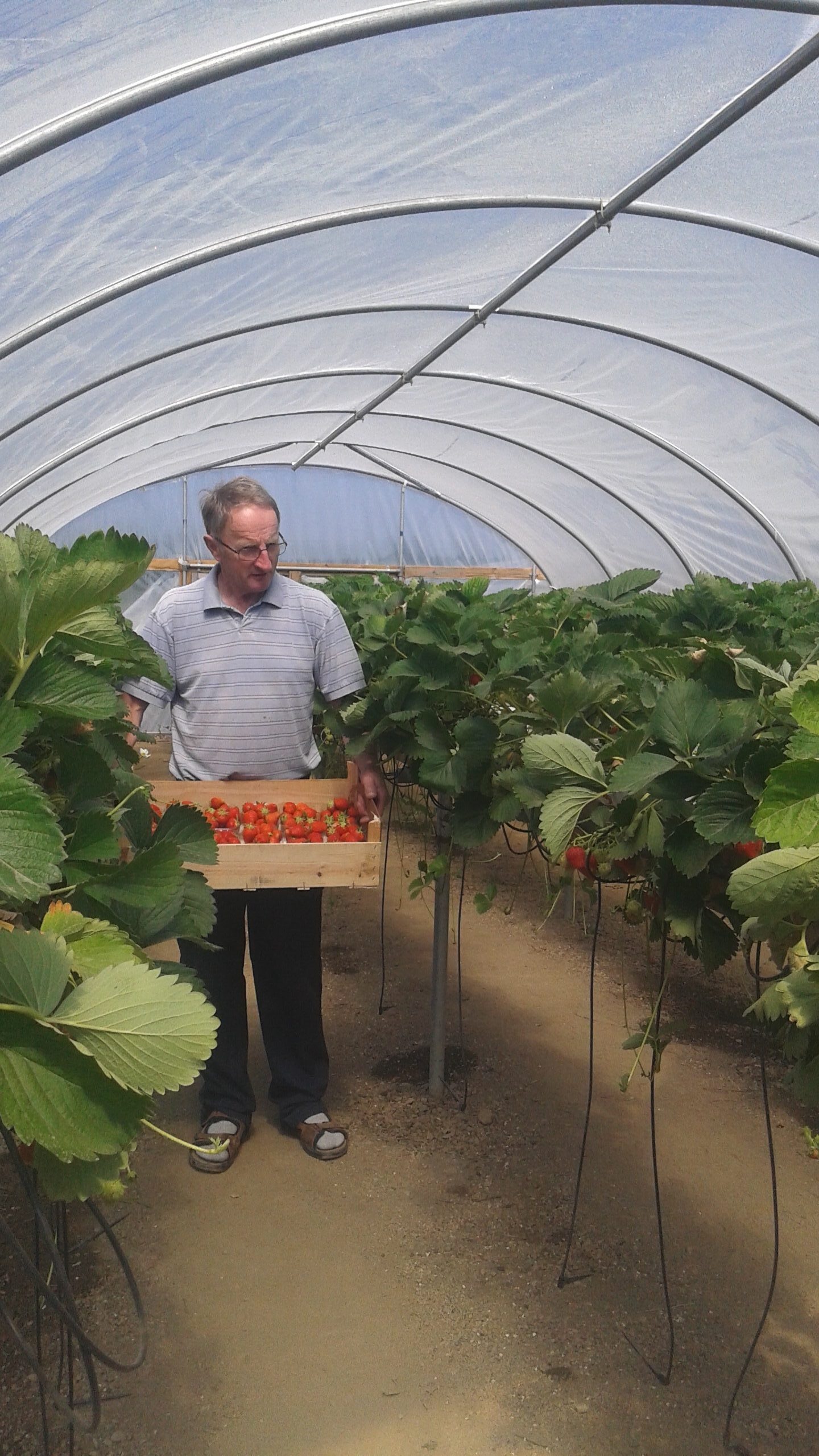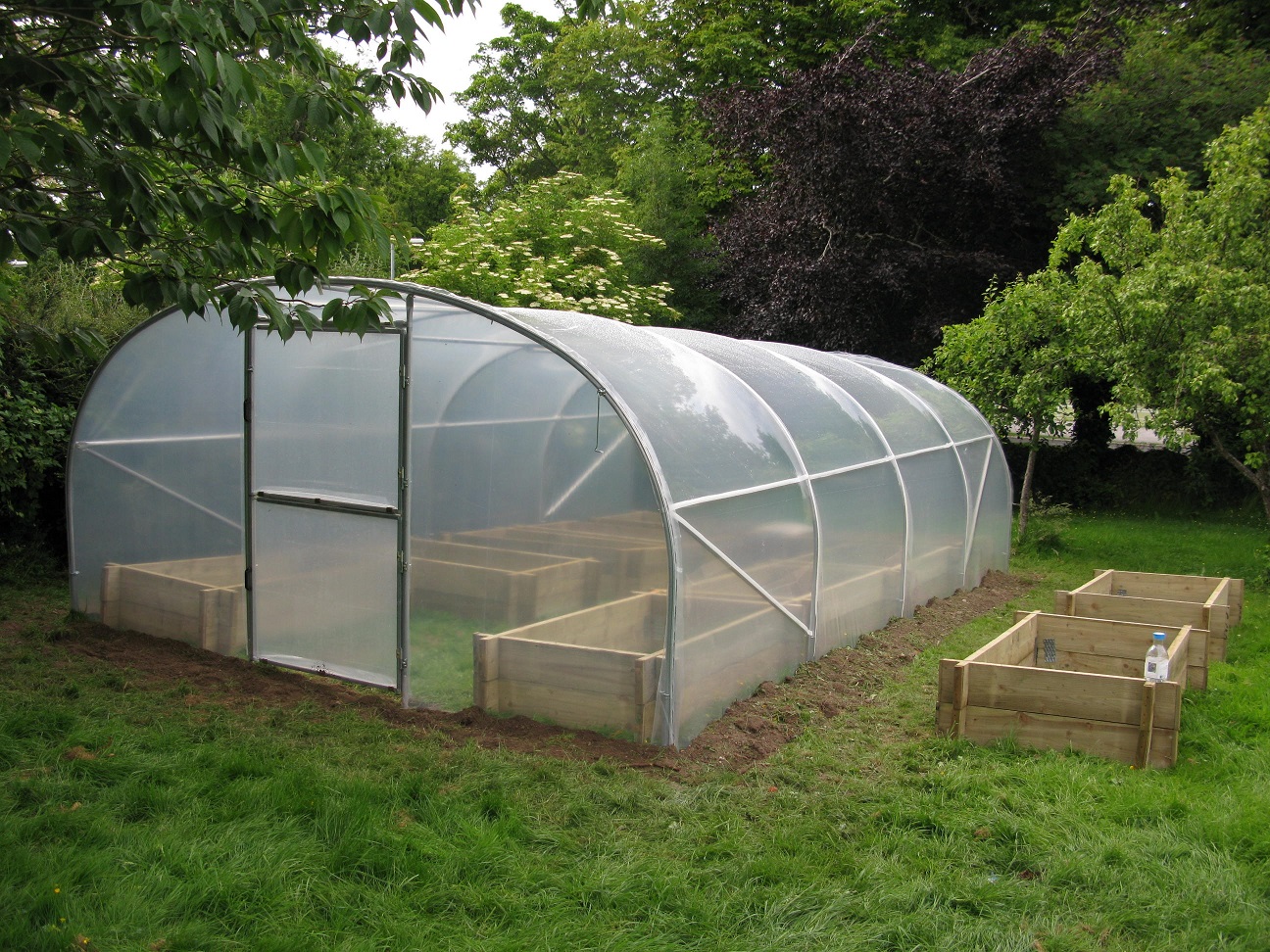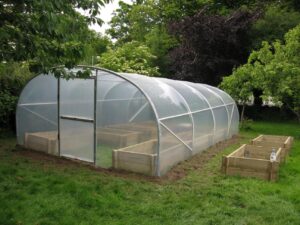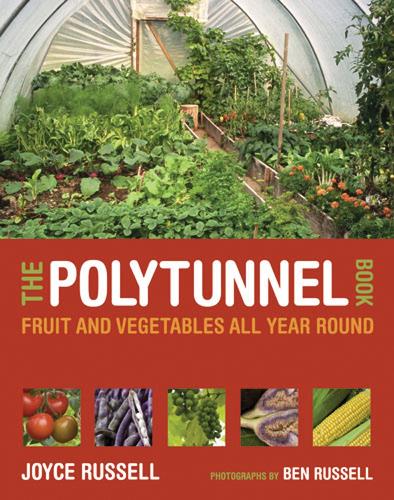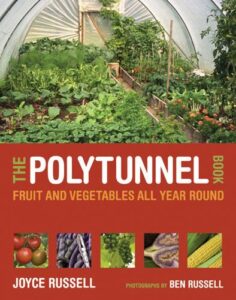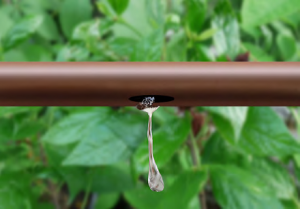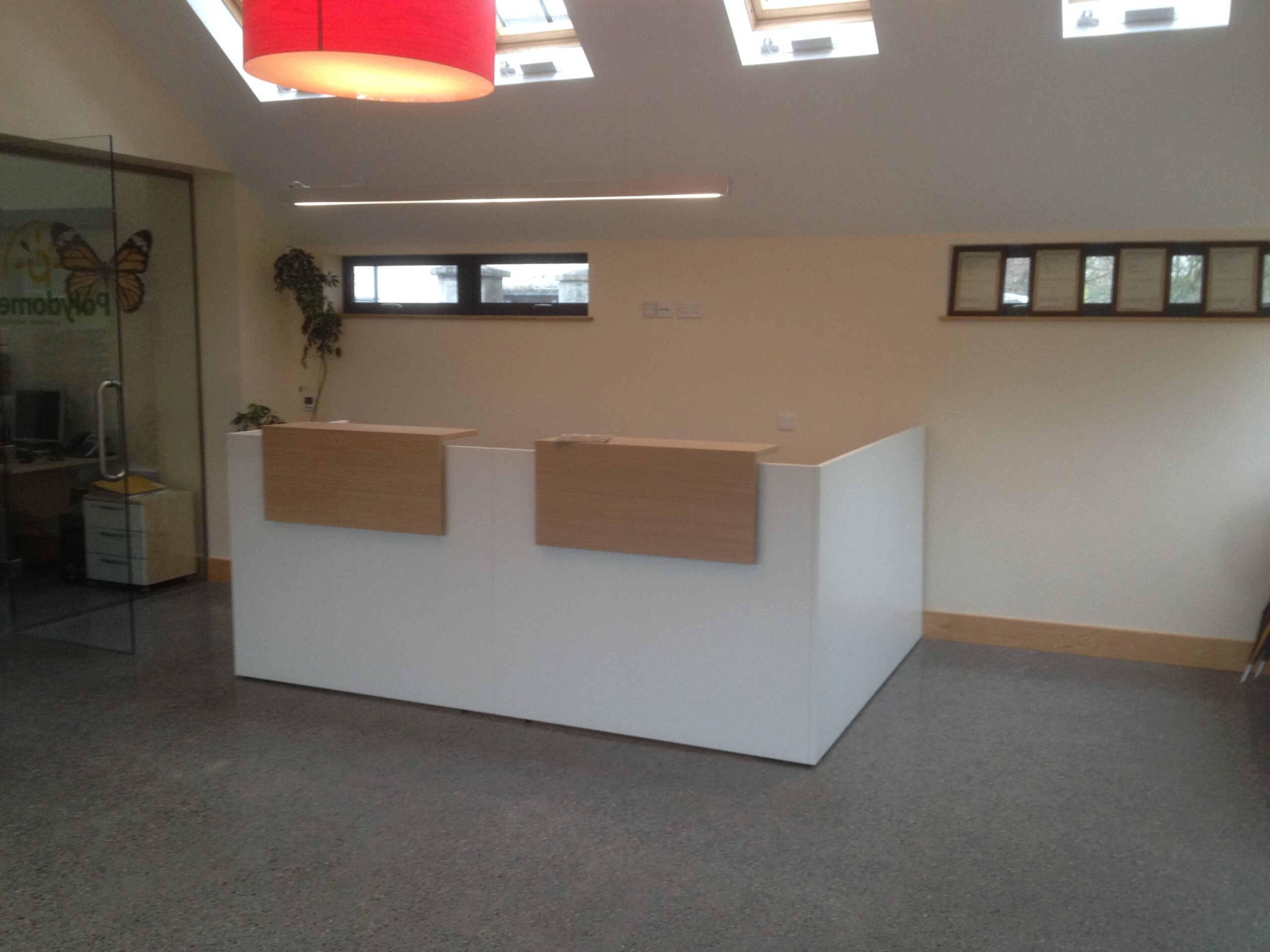A 2.5m x 6m (8.5ft x 20ft approx.) Polydome Tunnel which we built recently during the Indian Summer.
A Polytunnel is a low cost way of covering a large area but it also has practical advantages – for example being completely safe.
Polythene has come a long way over the years – while we guarantee our 900 gauge cover (which maximises durability and light transmission) for 6 years we have had many customers achieve life spans of more than 10 years – some even 12 to 15 years and believe it or not the longest life for one of our polythene covers so far is over 20 years.
Many things affect the lifespan – you don’t want the polythene too tight or too loose. If you use chemicals that might shorten the life. The main thing affecting the life of the cover is the sun – how many hours of daylight the cover receives.
Our 900 gauge polythene is manufactured to include the maximum grade of UV inhibitors the manufacturers offer.
We selected this polythene for its mechanical characteristics, it is supple so can be stretched as easily as lighter covers – and being supple it actually is less likely to be damaged during installation.
Our 900 gauge film is thermic – providing enhanced growing conditions and is clear as you can see from the photo which we find most customers prefer.
We have this cover in sizes from 2.5m wide up to 12m in width on jumbo rolls which we cut to your required length. Wider covers are available but in a lighter gauge (800 gauge).
Call our sales office if you would like a quote for a replacement cover on 057 912 0424
